Diving - The adventure continues!
Diving Scapa Flow, September 2012
Ever since I started diving, I'd had an ambition to dive Scapa Flow, I'm not entirely sure where it came from, it just sounded cool to be diving down amongst wrecks of WW1 battleships and as I found out more it became clear that Scapa is a bit of an international Mecca for divers.
As it was a 'big' birthday in 2012, Mandy said she'd treat me to a trip to dive Scapa Flow. I chose Scapa Scuba for this, for no other reason that they seemed friendly when I got in touch.
It's a long way from Fleet, Hampshire to Stromness, where they're based, so I needed transport and didn't fancy a solo drive the length of England and Scotland. Therefore, a flight seemed the best option and Scapa Scuba could provide everything I needed to dive in (I took my own dry suit, but I could have used theirs too) if I took one of their guided dive packages.
They do a 4 day package and, with a no-fly day at the end of the week, this seemed perfect for me and was booked for early September as the 'gurus' suggest this is the 'best' time to dive Scapa Flow.
The time passed surprisingly quickly and on the 9th September I drove to Gatwick, left my car in the Long Stay car park and boarded a FlyBe flight to Aberdeen.
The flight was half empty and very comfortable (a small jet of some sort), although they could have stretched to a free cup of tea or coffee I felt.
The connecting flight from Aberdeen to Kirkwall (the airport on Orkney) wasn't for 5 hours after my arrival, so I hopped on the airport bus to Aberdeen.
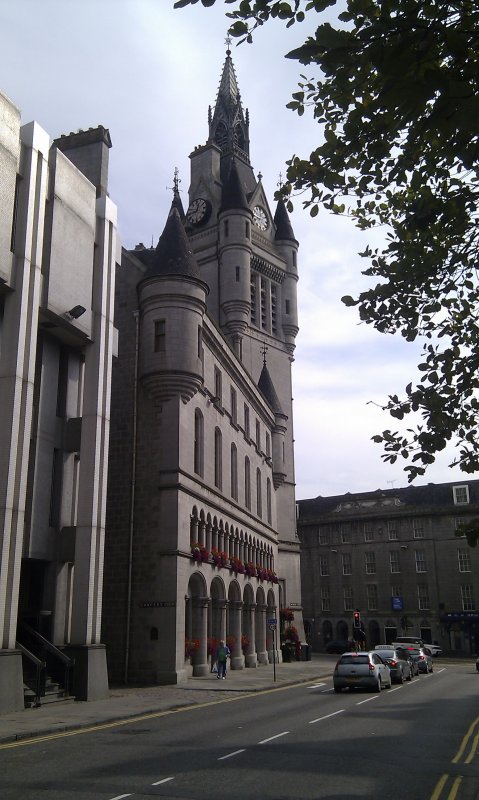
Quick stop in Aberdeen
After a Costa Coffee, I wandered around the town, bought some provisions for lunch on Monday and a much needed new pair of jeans, visited the Aberdeen Maritime museum (not big, but worth an hour of your time if you're there) and the old churchyard in the centre of town. Then it was back on the airport bus and return in time to get the twin prop plane up to Kirkwall (A free tea and biscuits on this flight I noted!).
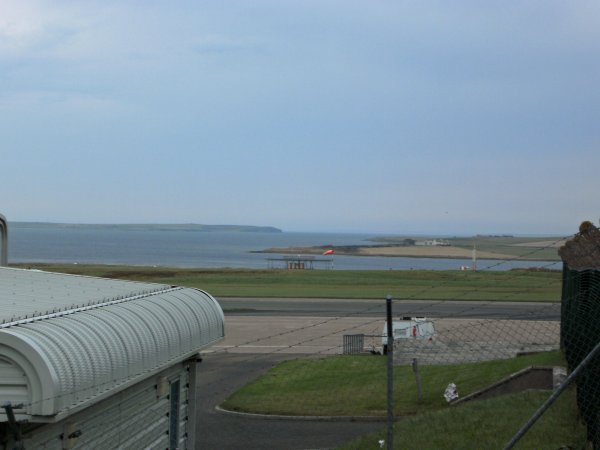
Kirkwall Airport
On arriving in Kirkwall, it was grey and cool and, although there was a bus from the airport to Kirkwall, it didn't tie up with the bus to Stromness. The options were a 3 hour wait or dig in my pocket for a taxi. Although it was a lot dearer, I decided to go for the taxi and get to my lodgings for the week.
I was staying in the Orca in Stromness and it turned out to be a perfectly pleasant place to stay. The owner, Doris, is a pleasant woman who I always found helpful and friendly. My room was a twin, so plenty roomy enough for one, with an ensuite shower and toilet and two single beds. I slept well every night and was never cold. The breakfasts were great too and really set me up for my diving days.
I ate in the Royal and ordered a Dark Island ale (very good) and a Royal Chicken Burger. Sadly the first burger wasn't cooked (much at all!) and I sent it back. The second one was fine, but in the half light of the pub, eating uncooked chicken fillet didn't bode well for the week ahead!
Coln - 10/09/2012
The wreck on the excellent Scapa Flow Wrecks site
Whilst waiting for the bus at Kirkwall airport I'd got a message from Sara at Scapa Scuba to change the departure time of the boat to 10AM, which meant a nicely leisurely morning.
The Jean Elaine is a converted North Sea fishing boat (one of a pair of green hulled ships) and, compared to some dive boats I've been on, looked a little rustic. Fortunately, looks were deceiving and it was well equipped and well suited to the job with plenty of cabin space to get undersuits on and a dedicated, warmed (by the engines) covered area to store drysuits in between dives.
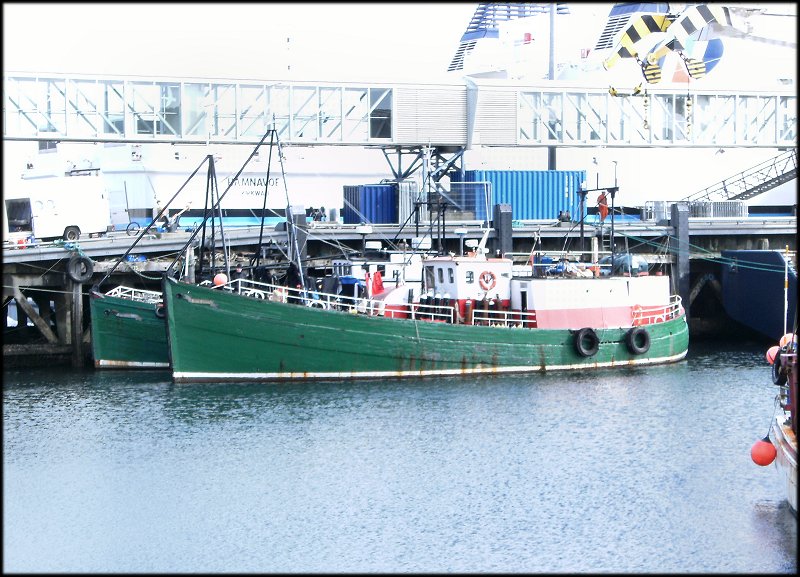
The Jean Elaine
My guide for day one was Kieran.
Andy, who ran the boat, announced we were diving the Coln first of all. The Coln is a Dresden II class cruiser and like the other cruisers, lies on its side, meaning there's plenty of opportunity to explore the wreck and get a good feeling for what you're looking at, provided the conditions let you.
Having experienced very poor visibility on HMS Scylla a few weeks earlier was wondering if Scapa Flow would be mostly diving by Braille, but I needn't have worried.
We got the 20 minutes to go shout after about 40 minutes and kitted up. I was diving on air today, so they filled a 15L tank for me and we were fairly soon ready to go. I must admit the Buddy BCD I had seemed a bit basic and 'low-rent' compared to my own Mares, but everything worked ok.
We dropped into the water off the side of the Jean Elaine and swam over to the shotline, secured to a buoy on the surface.
Kieran gave the "thumbs down" and we descended along the shotline, which dropped us more or less onto a lifeboat davit.
Vis was a good 10m, so you could see what you were looking at in the context of the rest of the wreck and, although it was a little dark as deep as 30M, it was easy to get a sense of the size of the Coln, and this wasn't even one of the big wrecks!
From the davit, we swam to the bridge structure, which is a tangle of pipework. Unlike more modern ships, bridges were little more than spotting platforms on the ships in this era and the control room was in a separate armoured 'conning tower' just ahead of it.
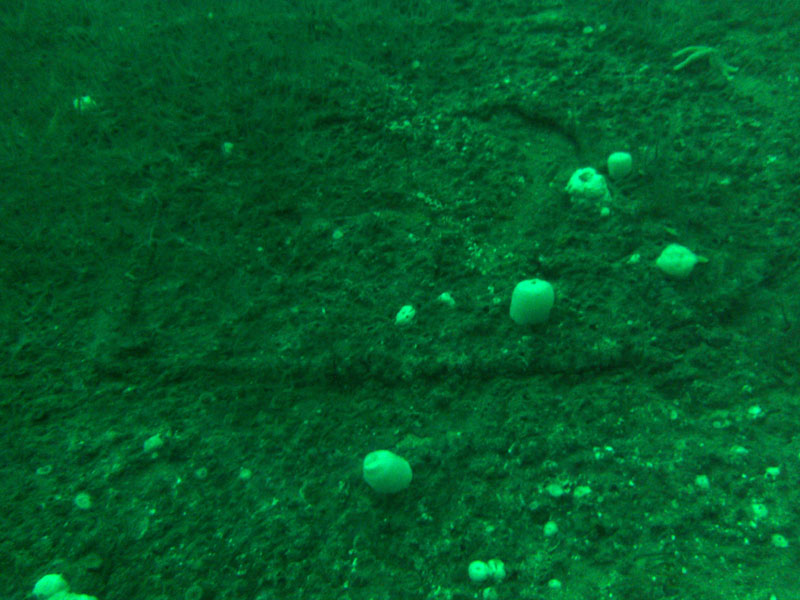
You can just make out the shield shape here.
That was our next point of interest and we looked into the slots on it which afforded limited visibilty for those inside. We swam forward past the turret mounts for 5.9" guns either side of the ship (now gone) and the anchor capstan and rope bollards, viewing the shield which once bore the ship's name and crest and the indentation where the anchor once rested when at sea.
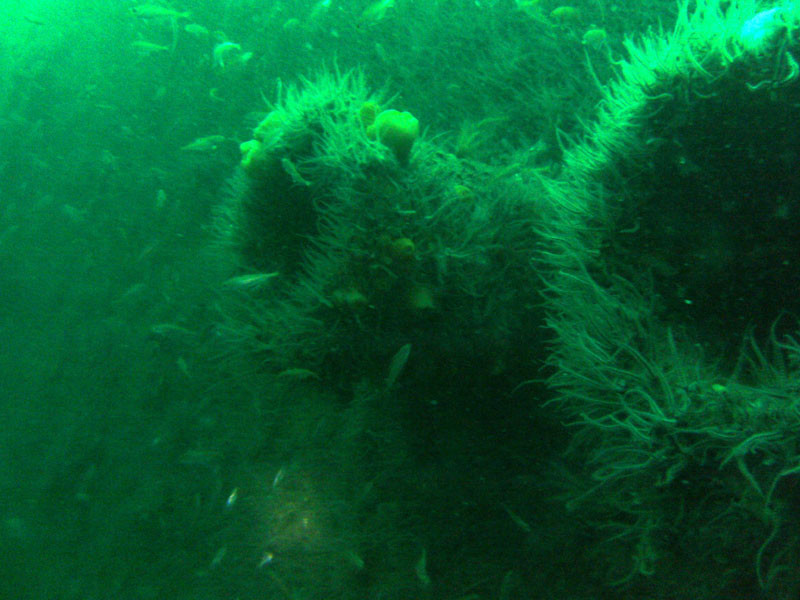
Rope bollards and lots of fish!
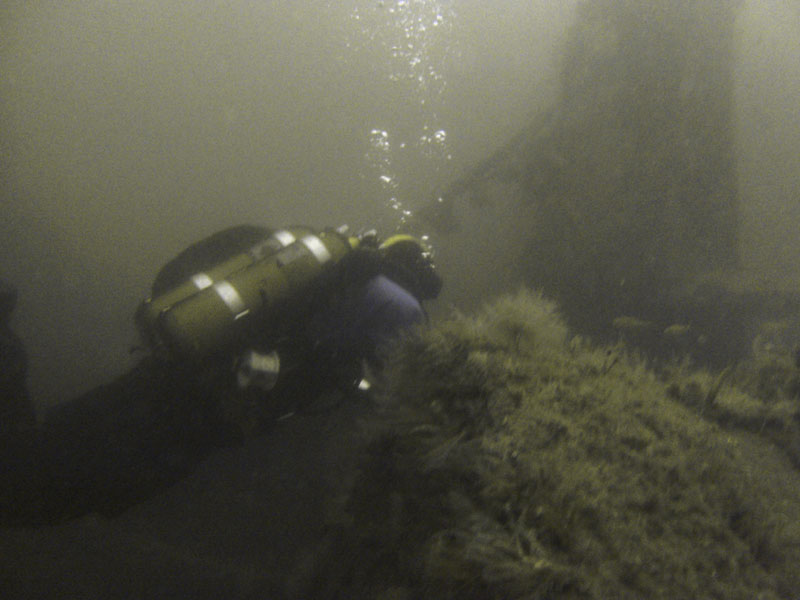
Kieran navigates the Coln
We returned along the hull to the shotline and ascended, with a total dive time of 32 minutes (including a stop at 10M for 2 minutes as well as the familiar 5M 3 minute stop).
The Jean Elaine has a lift on the side of the ship and, bobbing in the water, I was wondering just how easy it would be to get onto it, but Andy very deftly stopped the boat a few yards away and I swam to and onto the lift with no problem at all.
Back on board we dekitted, got my tank refilled and spent a couple of hours degassing and having lunch.
Dresden - 10/09/2012
The wreck on the excellent Scapa Flow Wrecks site
Our afternoon dive on day one was the Coln's sister ship (and class name bearer), the Dresden.
Although this might have seemed a bit samey, I knew that the Cruisers are actually some of the best wrecks in Scapa Flow and that there would be plenty to see. In fact, you could quite happily dive one wreck for 4 days and not really be able to say you knew it all, such is the scale of these wrecks (The Dresden II is 115m long).
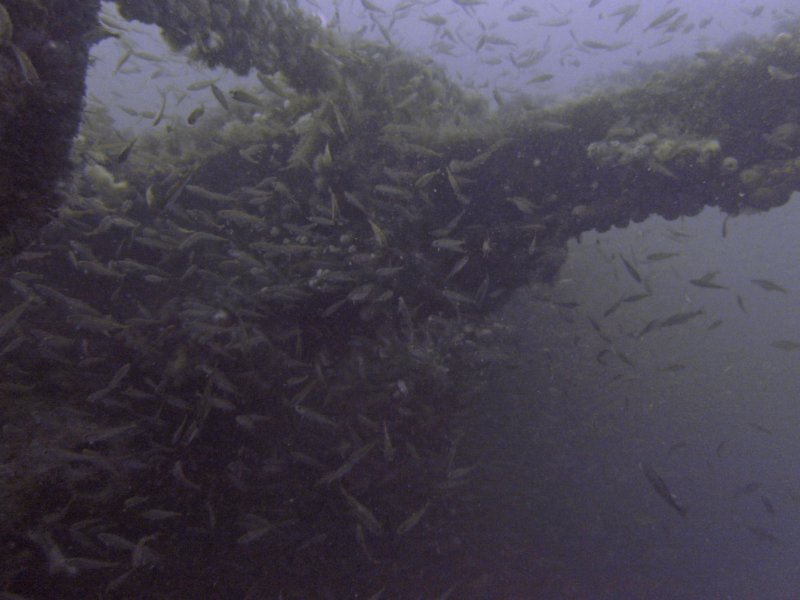
Fish abound on all the wrecks
The Dresden lies, unlike the Coln, on her port side and we descended the shotline near the bow, taking in the much more prominently raised and larger crest shield that befitted the nameship of the class.
We swam down to the seabed taking in the conning tower and collapsed bridge structure as well as the fallen masts.
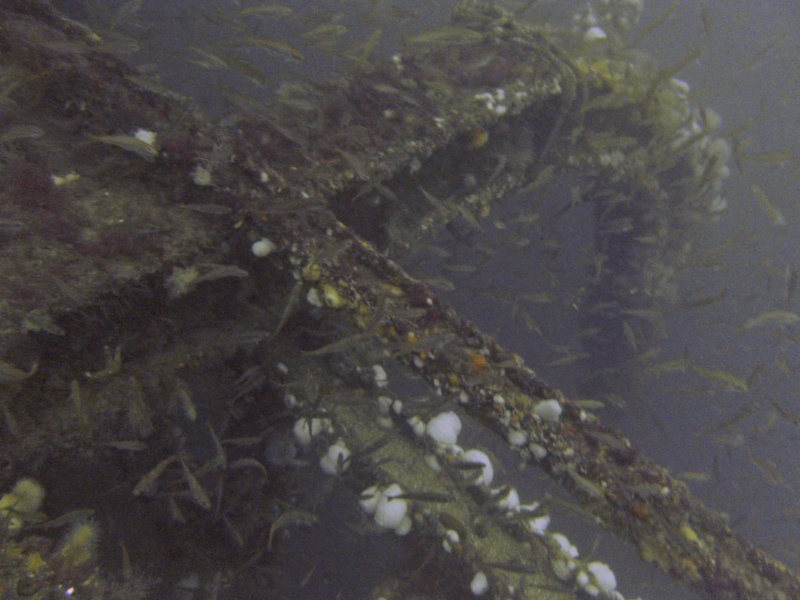
Davit on a Dresden class Cruiser
As the Dresden's bow deck is peeled back, it's possible to see the anchor capstan mechanism extending down through a couple of decks and when Kieran shone his torch through one of the conning tower slots, it illuminated the brass wheel inside, untouched since 1919!
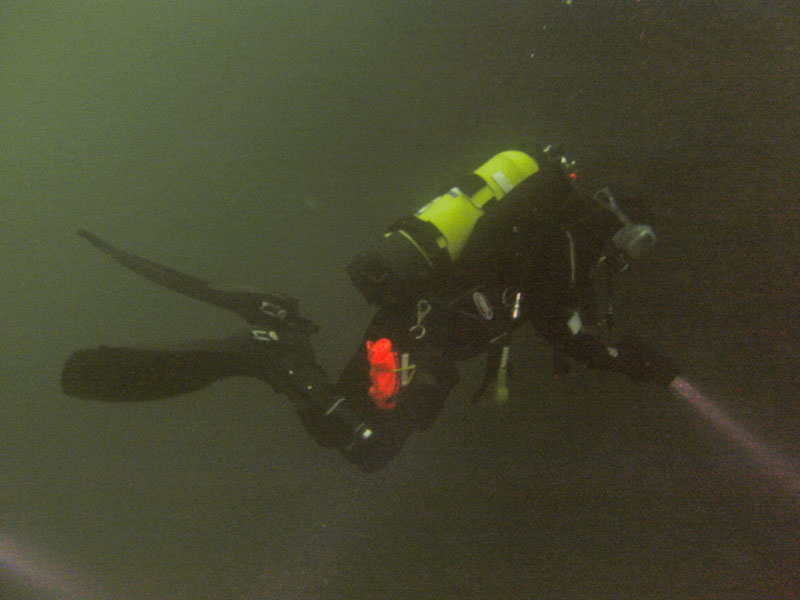
A fellow diver
We ascended the shotline and reboarded the Jean Elaine.
On the way back the sun came out and I enjoyed the scenery around Scapa Flow.
I have a vague feeling I skipped dinner this night as I'd stuffed myself with food on the boat at lunchtime and a huge cooked breakfast in the Orca. I certainly don't recall feeling hungry!
Kronprinz Wilhelm - 11/09/2012
The wreck on the excellent Scapa Flow Wrecks site
On the remaining days of my dive I was guided by Adele, a young woman from Manchester. She certainly knew her stuff and was great company and informative. A great person to dive with all round.
The second day started with one of the big ones, a König class Battleship (one of 3 still in the Flow), the Kronprinz Wilhelm.
These are so large(148M) we focussed on the stern on this dive. With a 32% Nitrox mix I had extended bottom time for this dive and we made the most of it.
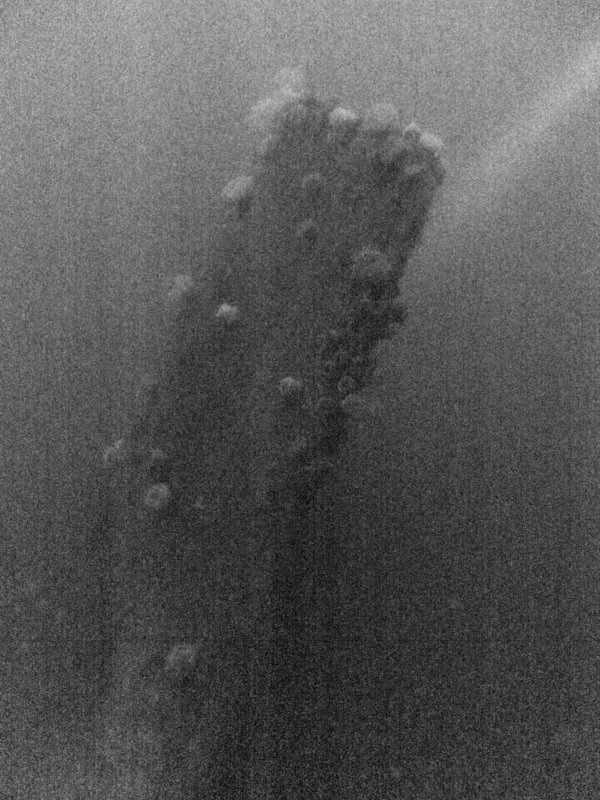
One of the rudders of the Kronprinz Wilhelm
We descended the shotline to the upturned hull and then swam back along it to the twin rudders which stick vertically surfacewards.
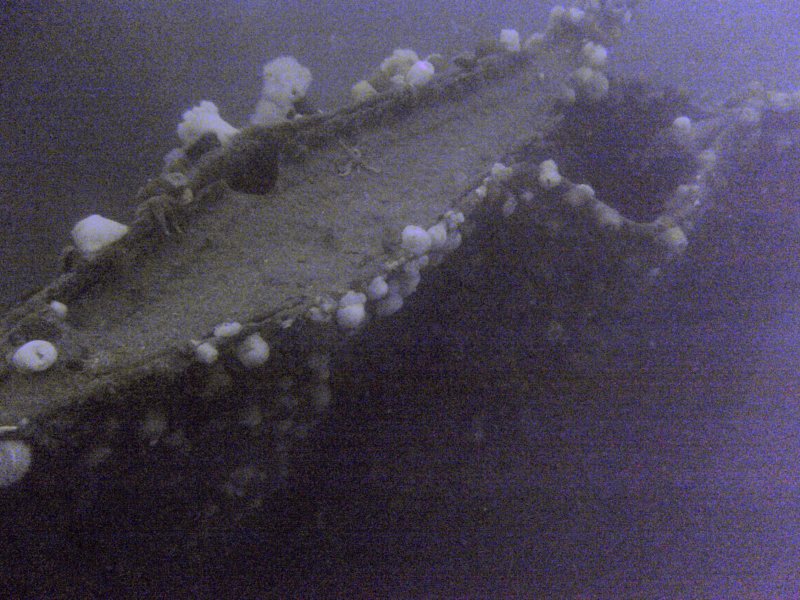
Close up of the rudder
Then we swam forward to a break in the hull and explored inside for a while around the boilers. There were huge lumps of incredibly light coal still inside the ship and after 34 minutes we returned to the Jean Elaine, confident that I'd only really scractched the surface of all you could see on these enormous ships.
Some people had said to me before that a trip to Scapa Flow was pointless without a 'deep' certification, but although I couldn't get down to see the main guns underneath the hull (or indeed the other two battleships where the shotlines descend to below 35m) on this trip, it simply meant I had more time to explore other parts of the ship. If I'd had a deep certification it's likely I'd have simply gone to the sea bed and seen the guns and never have gone inside the break we explored. Now I have an incentive to get my deep cert and come back to see the guns too!
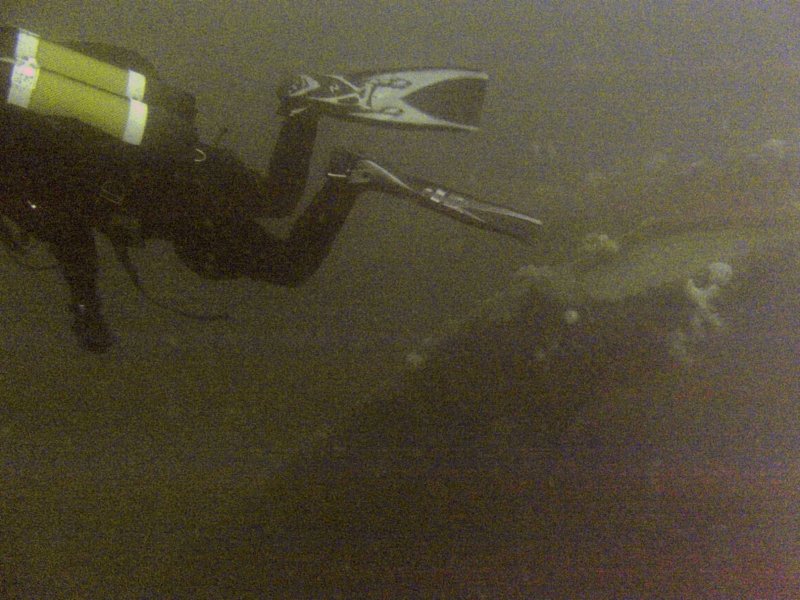
Adele on the rudder of the Konprinz
We regassed with a top up of air, but treated the next dive as a pure air one.
Tabarka, Burra Sound - 11/09/2012
The wreck on the excellent Scapa Flow Wrecks site
After a break for lunch the boat was moved around to Burra Sound. Adele was quite excited that we were going to dive on the Tabarka, a WW2 block ship (to keep out German U-Boats) and some of the other divers onboard (with lots of Scapa experience) spoke of it in glowing terms too.
The Tabarka is only in 14m of water, so the light is pretty good. Also, the tide rushes through Burra Sound meaning there's virtually no silt inside the wreck. It does, though, mean that you need to dive it on the slack tide and we were to experience some of the changing tide effect when we left the wreck.
A first for me, this was a 'Negative Entry' where you don't fill your BCD with air, but simply drop like a stone into the sea to avoid being swept away from the wreck by the tide. It didn't work perfectly as somehow I bobbed up like a cork anyway, despite emptying my suit and BCD before entry. I suspect I held my breath as I went in.
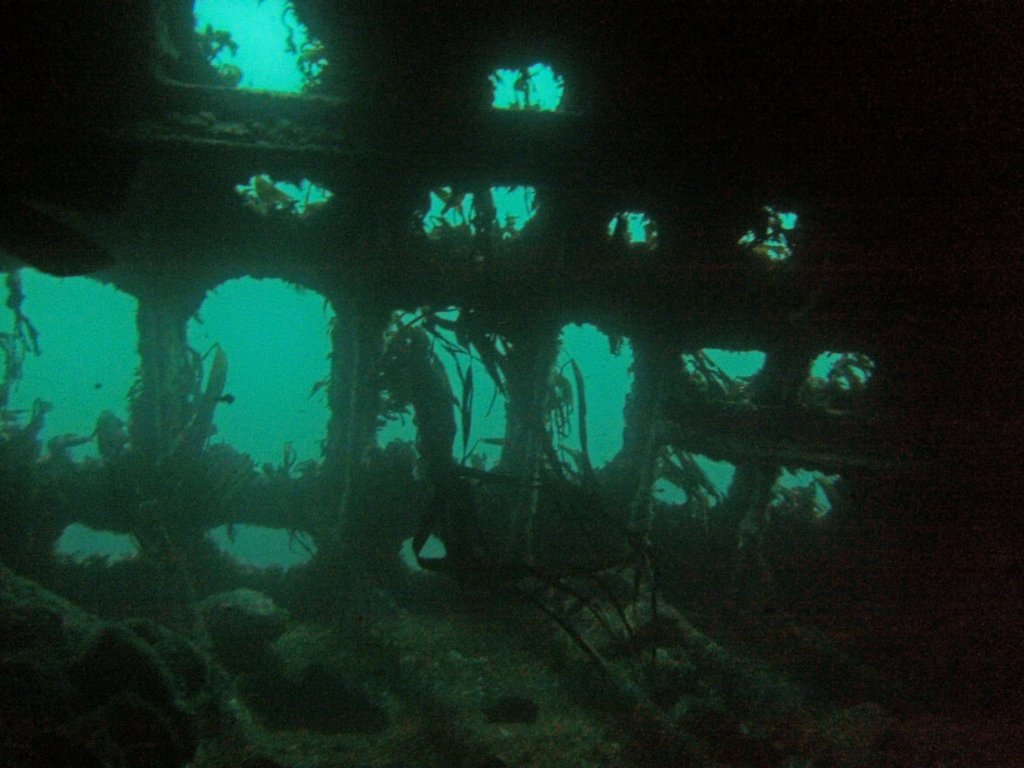
Cathedral like light inside the Tabarka
However, I quickly regained my negative buoyancy and was soon swimming down to the wreck where I found a slightly bemused Adele waiting for me.
The visibility was excellent, probably in excess of 20M. If it had been a bit bluer (and warmer!) I could have been back in the Caribbean!
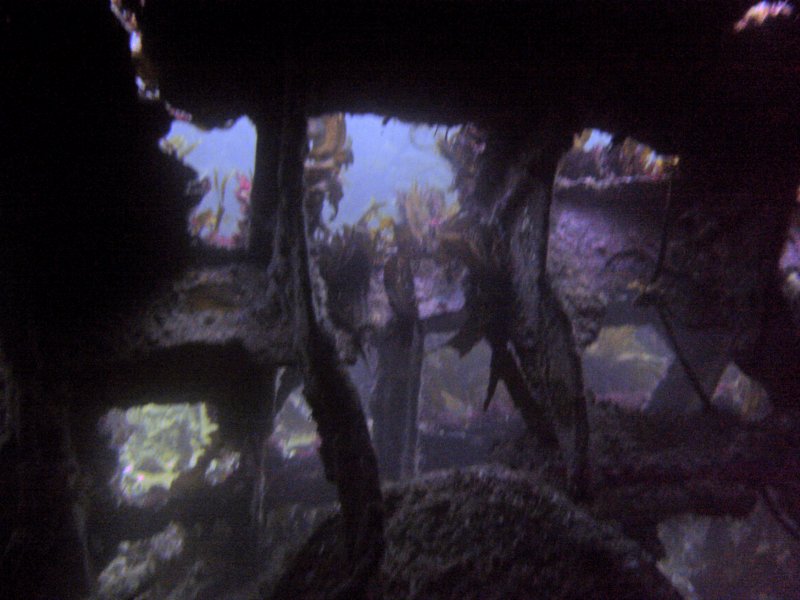
Plenty of life (and light) on the Tabarka
We swam around the wreck for a few moments until Adele found a good break in the (upturned - It was a cock up when the ship was sunk) hull and we were inside.
Adele had spoken of the great light inside the hull and how it filters in like a cathedral and my photos can't begin to do it justice. It was lovely, with excellent vis, tight narrow swim throughs between spars (but never too narrow even though I did wonder if I was going to fit in the same gaps Adele seemed to just fit through!) and, like all the wrecks, teeming with life.
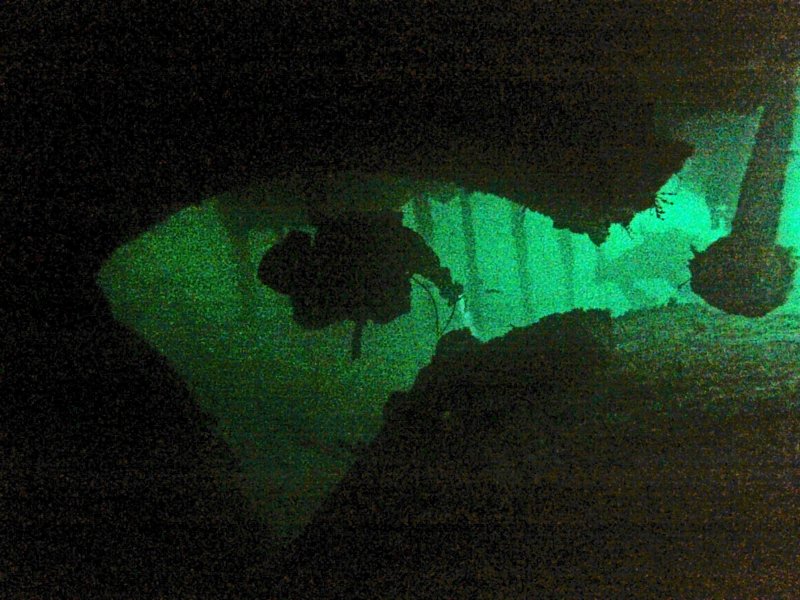
Swimming over the boilers
We swam from section to section (noticing a bit of current as we did) and up and over the boilers. In places it almost felt like being in a deep, dark forest with the light streaming in between the trees.
At one stage we hovered in a large chamber and Adele indicated for me to choose where to go. I pointed in one direction and we passed through what was once a bulkhead but now just a series of vertical spars. As we did, I was pushed sideways by the current and Adele indicated the tide was turning and it was time to go.
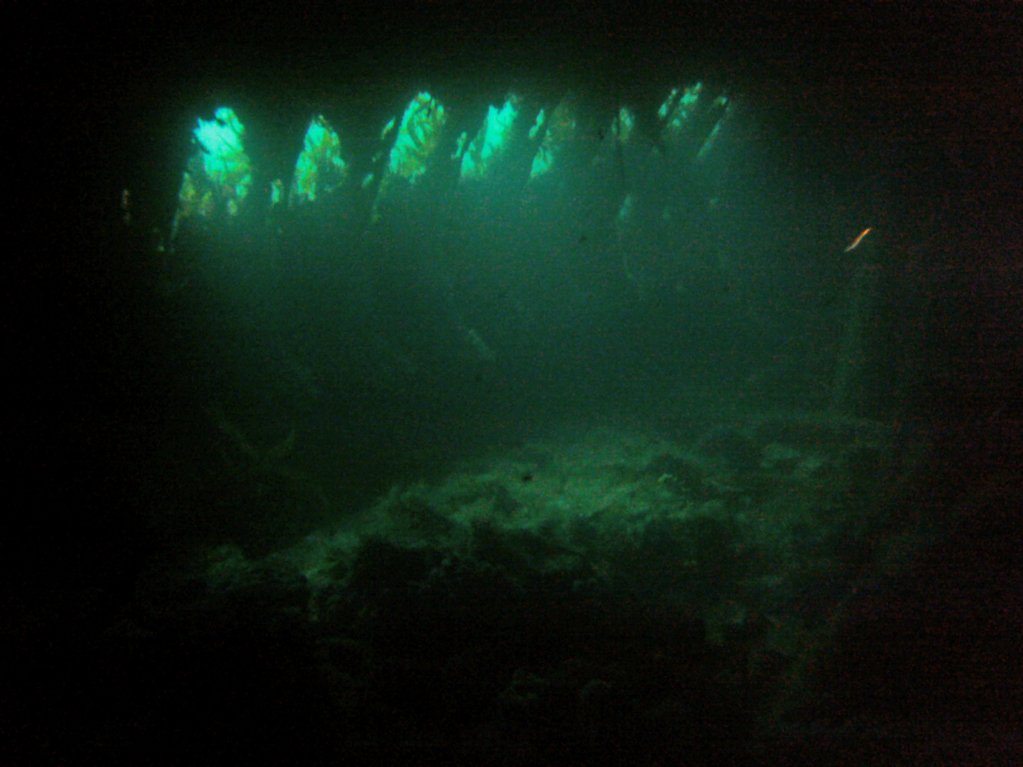
Loads of light penetrates inside the Tabarka
We paused in the break in the wreck as Adele got out her DSMB, but as soon as she released it, the line was all taken out (25m she said) and the reel pulled from her hand. To her credit, she quickly caught it, but was off at a rate of knots. I had to swim quite hard to keep up as she was pulled along by the DSMB, but from time to time the current slackened and we were able to regroup and Adele reeled in some of the line.
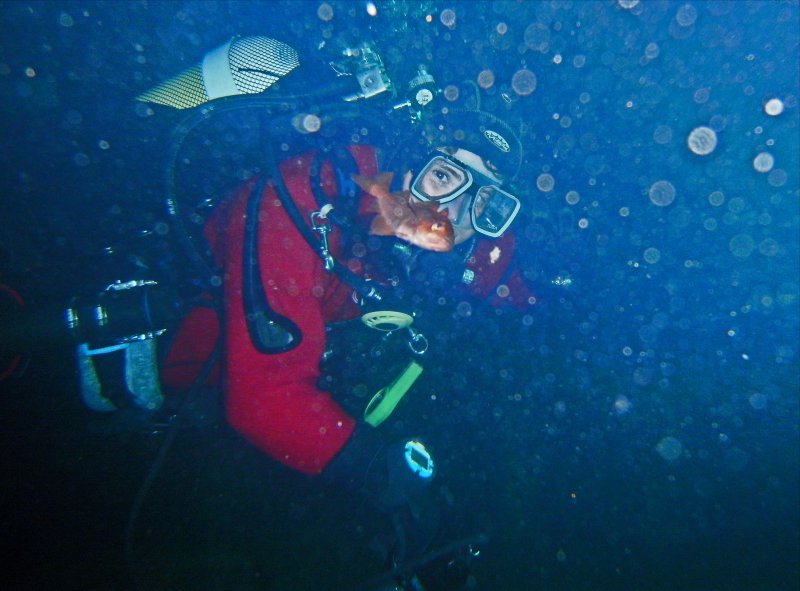
Adele, and a friend, inside the Tabarka
At one point as she did this, at about 10M we were passed by a seabird swimming down!
Eventually we reached 5m and did a safety stop and then surfaced and waited for Andy to bring the Jean Elaine to us. We were usually the first party up as most of the other divers onboard were diving on twinsets and some had O2 stages to speed up decompression stops.
It was a great dive and quite a contrast to the vast German fleet wrecks. One of the divers on the boat went as far as to describe it as "one of the best dives in the world" and as he'd dived at Truk Lagoon (and nearly everywhere else) that seems pretty high praise.
We got back to Stromness quite early and I was able to hop straight aboard a bus to Kirkwall where I took a quick tour around the town, visiting the cathedral (which is quiet ancient in parts, despite the rather unpromising exterior), museum (although I couldn't find the promised 3D Royal Oak images to my disappointment) and had a rest in a lovely little tea shop, just off the high street.
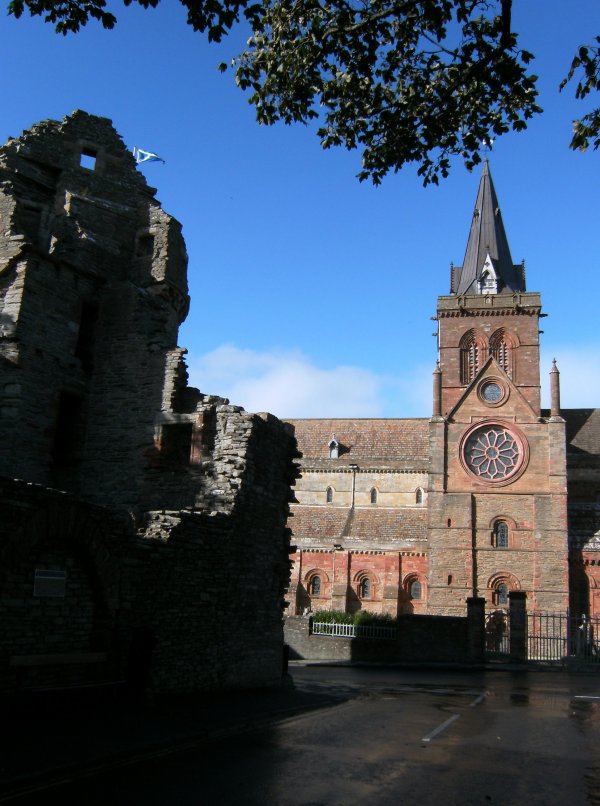
Kirkwall Catherdal
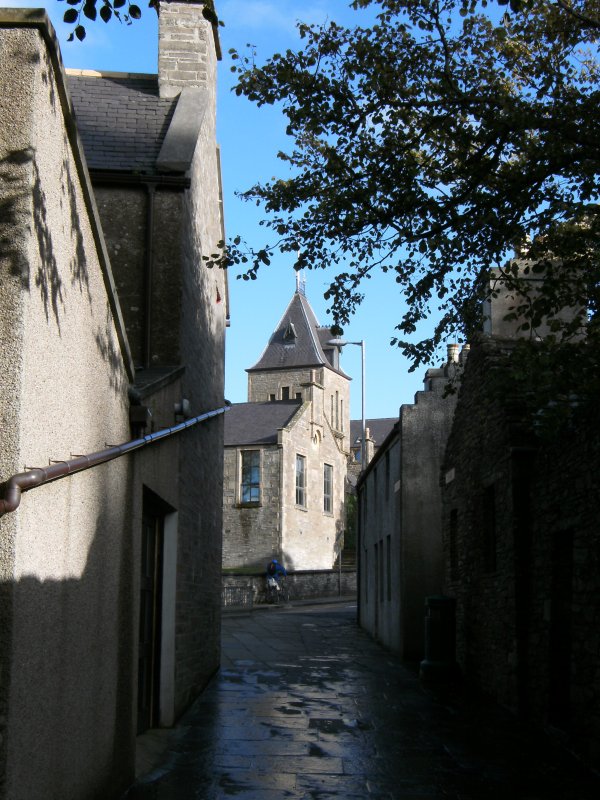
Around Kirkwall
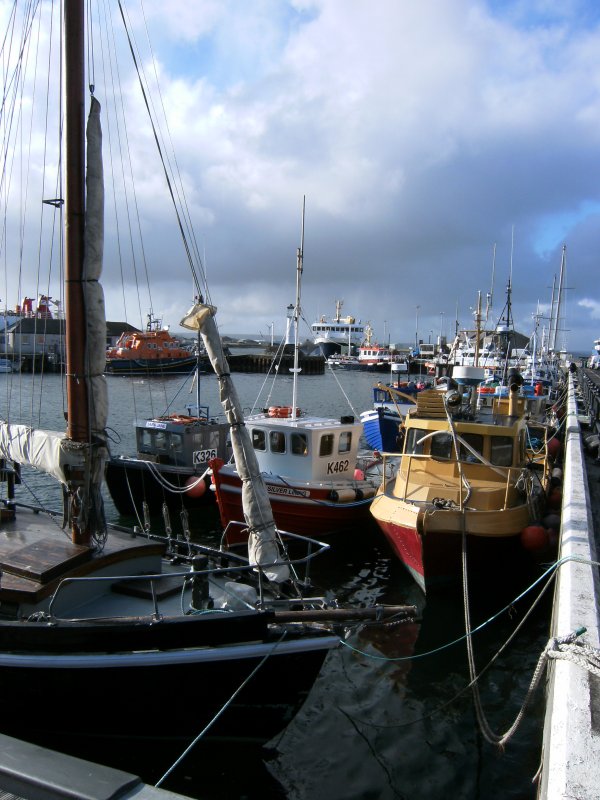
Kirkwall Harbour
I decided to stay for dinner in Kirkwall (as there's a limited selection of eating options in Stromness) and had a very good curry for dinner, taking the 8:30 bus back to Kirkwall. The trip cost me £4.50 return, much more reasonable than the £30+ taxi fare each way!
Brummer - 12/09/2012
The wreck on the excellent Scapa Flow Wrecks site
The Brummer was our morning dive on Wednesday. This is another Cruiser, but a different class to the Dresden and the Coln, being a lighter ship designed for mine laying.
The dive didn't start well as my left fin sprang off my boot on entry and the strap wrapped it around my leg. I managed to swim to the shotline where Adele was waiting and she put the fin back on for me.
We then descended the shotline and viewed the very intact bridge structure, with it's viewing platforms still in place.
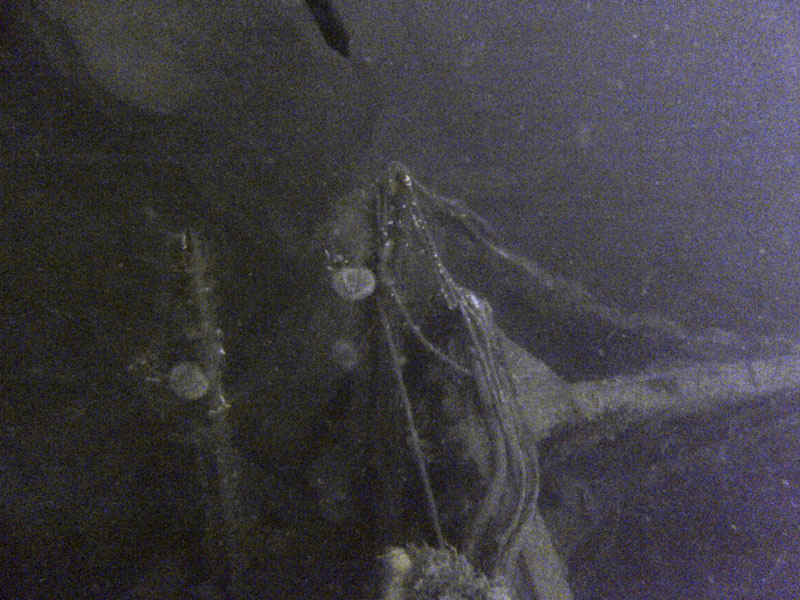
Debris on the Brummer
After that we swam towards engine room break, but there's only blast debris to see here, from the limited salvage work carried out on the ship.
Beyond that we viewed the officers' accomodation, including racking, suggested by some to be for storing flags.
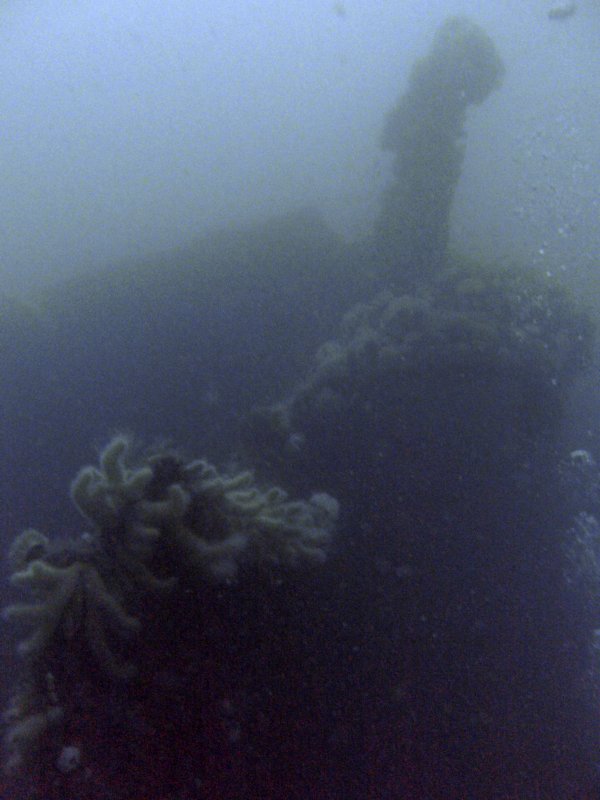
Wrecks are all alive with all sorts of undersea life
We continued on to the stern, then returned along the hull, viewing rails to carry shells inside, through a hole in the side.
We then returned to the surface via the shotline, dekitted and had our tanks topped off with air.
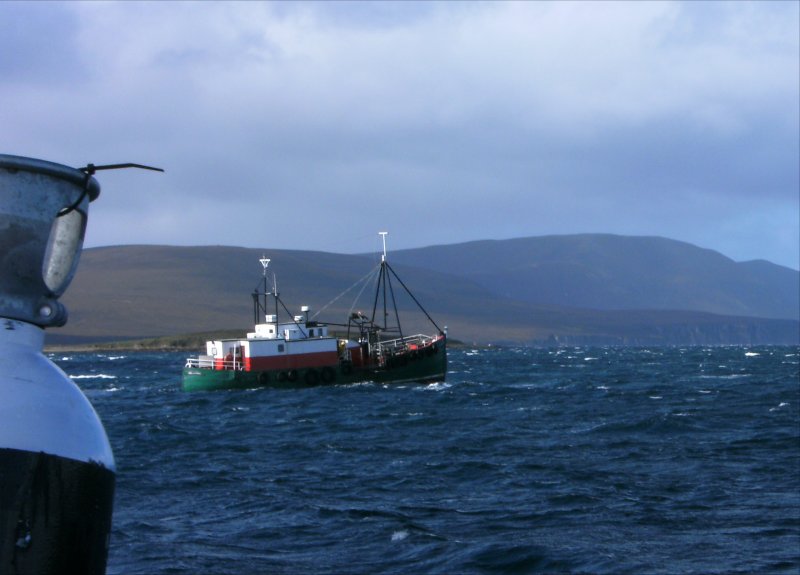
Our sister ship
F2 + YC21 Barge - 12/09/2012
The wreck on the excellent Scapa Flow Wrecks site
The F2 is another WW2 ship (a captured German one) that sank through neglect in 1946. One night YC21 (a barge) was moored alongside with the twin 20mm AA guns from the F2 onboard as a storm blew up. The crew went ashore, but hadn't allowed for the tide and storm and the YC21 was dragged down and sits alongside the F2 on the seabed.
We dropped down the shotline to F2, landing on the deck by the forward gun.
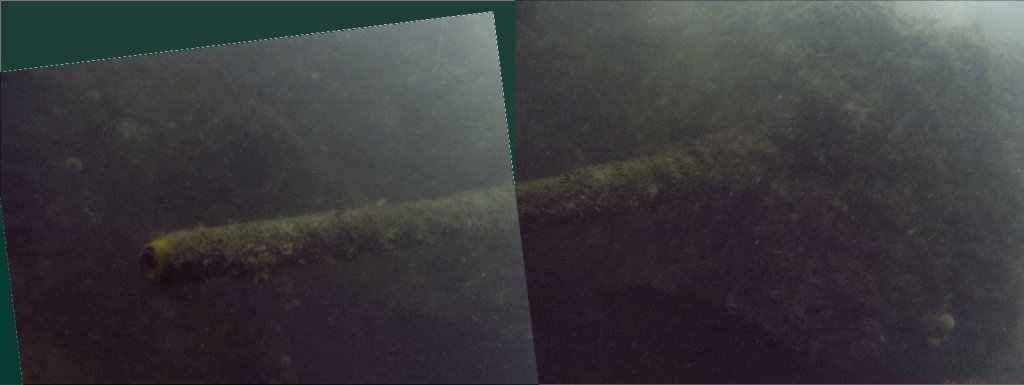
Composite shot of F2 turret and barrel
After that we dropped to the seabed and looked for Moray Eels under hull, spotting 6.
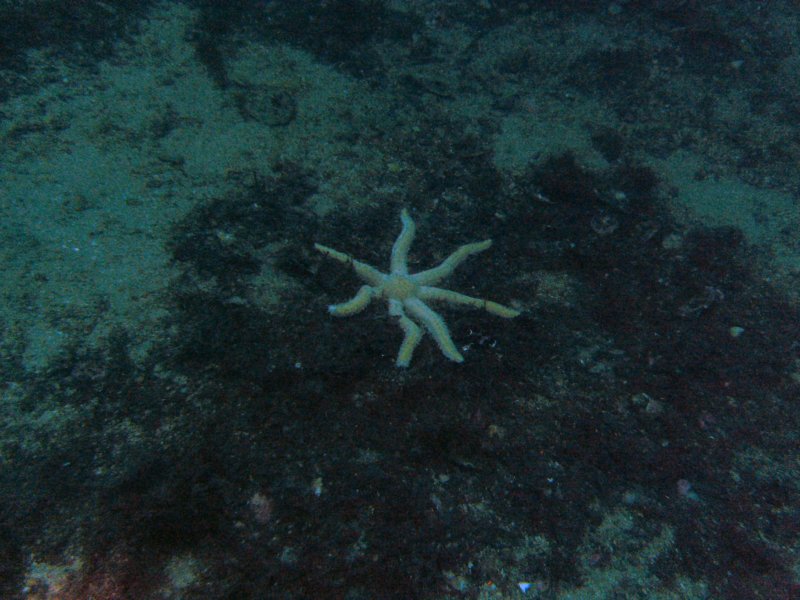
Giant Starfish - It's about 4ft across
We swam up the stern and through some swim throughs, taking in most of the ship.
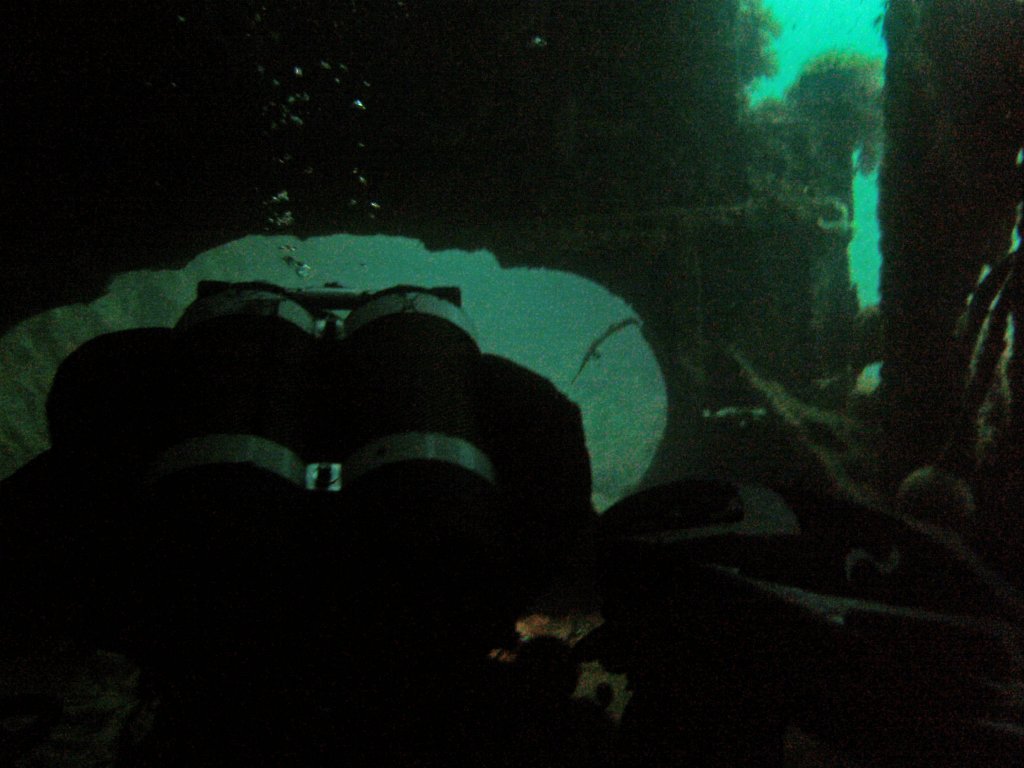
Some quite tight swimthroughs
Then we followed a line across a debris field to YC21. We swam up over the top first, to take a look down into the barge's hold to see the twin 20mm guns salvaged from the F2 before the barge sank.
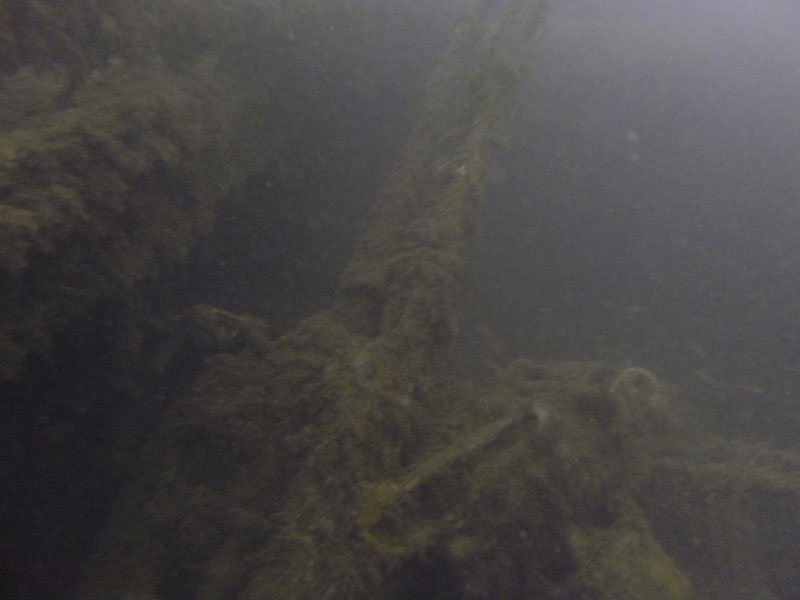
20mm guns in the YC21
We then swam down into hold and around inside the hull. Eventually we made our way back up around the hull to the shotline on the barge and back to the surface.
I had quite a serious leak during this dive, through the neck seal. After checking the seal and finding no problems, I decided to try shaving the stubble on my neck as it felt as if the latex seal was sometimes sticking opening when I moved my neck underwater, especially when we'd been looking under the F2 for Morays.
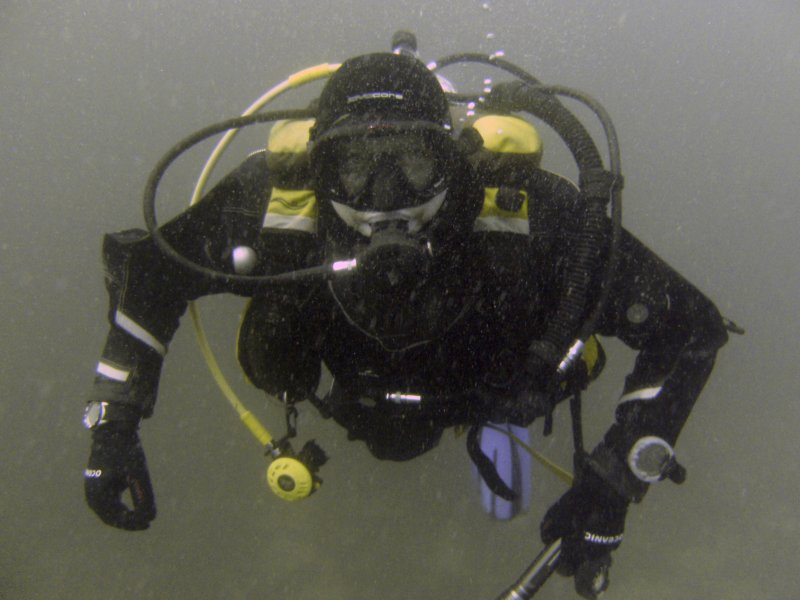
Me, in Scapa Flow
Some of the other divers were staying on the Jean Elaine and cooking for themselves and they invited me to dinner with them.
One of the divers had collected a lot of Scallops from the sea beyond the Tabarka and we had those as a starter followed by a chilli washed down with some of Orkney Brewery's finest offerings (I'd bought one of each as my contribution to dinner!).
Read more about my diving experience in Scapa Flow
Read some more of my diving experiences, by clicking the icons below.


